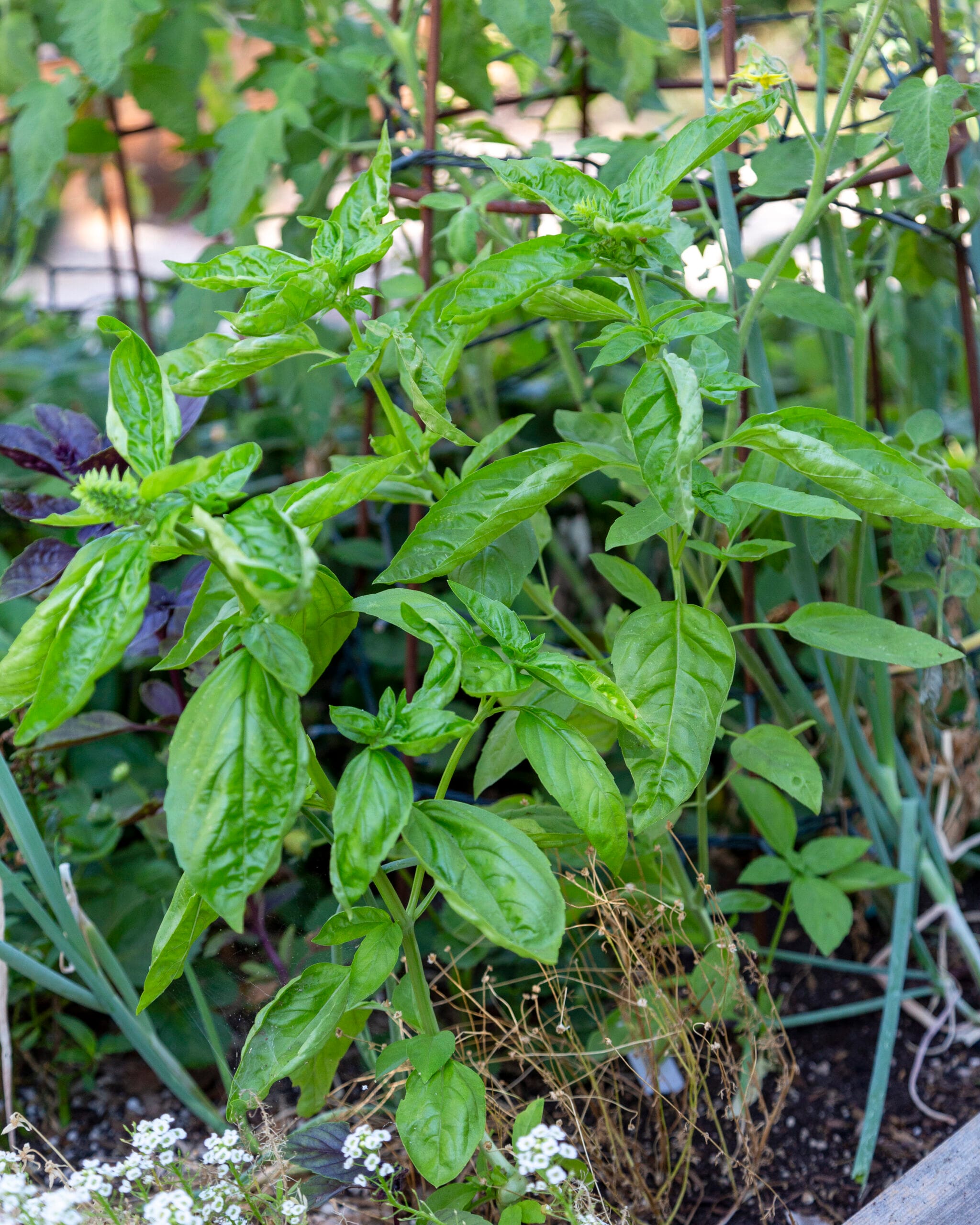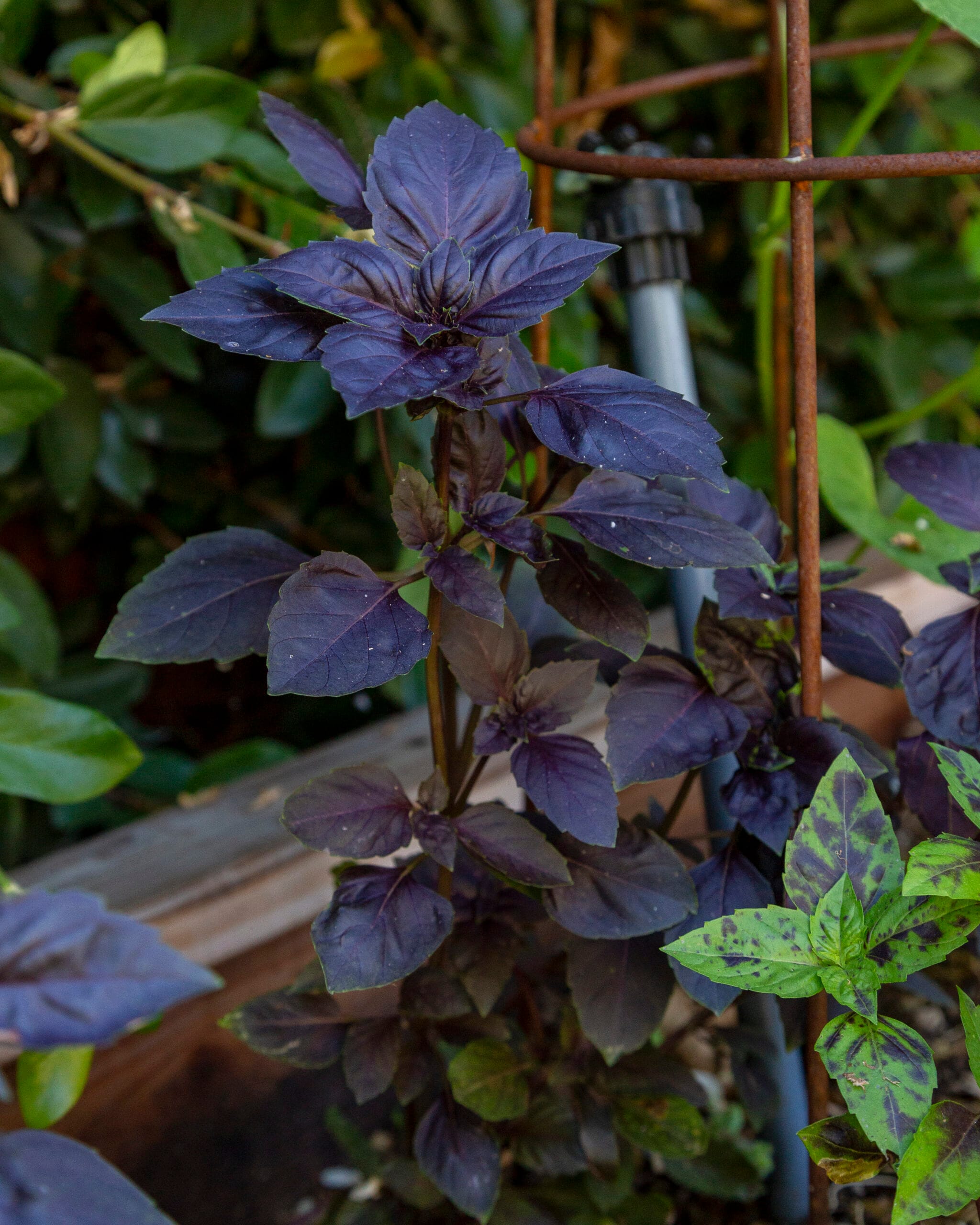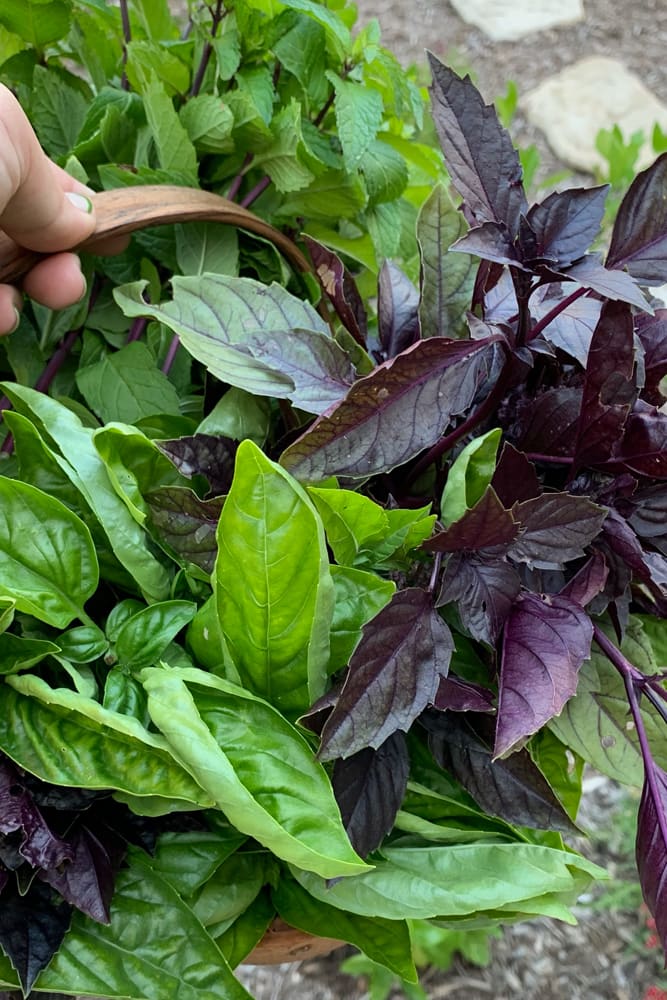Basil Plants: The 10 Best Varieties for Your Garden
July 26
3 min read
0 Comments
A Bounty of Basil: A Review of the Basics
Basil is a wonderful option for the warm- and hot-season edible landscape or kitchen garden. If you’re looking to add basil into your space, this post will introduce you to a few of our favorite varieties of basil, the most popular cultivars, and how those varieties of basil are used. By the end of this post, you will have a good idea of which basil plants are best for your garden, and perhaps be inspired to try a few new varieties.
The majority of basil plants come from two families: Ocimum Basilicum and Ocimum Americanum. Additionally, you may want to explore Ocimum Xcitriodorum, Ocimum Minimum, and Ocimum Gratissimum, three more compact basil varieties.
Basilicum varieties are the more common type of basil and are most often used for cooking. There are many different cultivars of Basilicum; some of the most popular ones are Genovese, Italian Large Leaf, Thai, Lemon Basil, and Holy Basil.
Ocimum Americanum is the other primary type of basil plant, and it is not as commonly found at nurseries. However, they are highly flavorful options and are delicious fresh or dried. The most popular cultivars of Americanum basils are Peruvian Purple Basil, Opal Basil, and Spicy Globe Basil.
When it comes to selecting the right type of basil plants for your garden, it is important to consider what you will be using it for. If you are looking to get basil plants growing in your garden for culinary purposes, then you will likely want to choose a Basilicum cultivar. If you are looking for basil plants that have a more ornamental purpose, then you will want to choose an Americanum or compact cultivar.
The Modern Potager Kitchen Garden
The joy of the modern potager is living in a more intentional and positive way where we recognize we are our environment and our environment is what we make of it. A healthy, sustainable environment starts at home with conscious decisions to live in a reflective way that prioritizes giving back to the ecosystem and our human community.
Here are 10 of the best basil plants for your garden:

1. GENOVESE BASIL
This is a very popular type of basil and is often used in pesto sauce and other Italian dishes. We enjoy making a fresh caprese salad with ours!
2. ITALIAN LARGE LEAF BASIL:
This type of basil plant is also popular in Italy, and it can be used in a number of different dishes. In the Heirloom Potager kitchen, we often use it in salads, as flavorful wraps, or dry it for seasonings.
3. THAI BASIL
If you like your food with a little bit of heat, Thai basil is the variety for you. It has smaller, pointier leaves than sweet basil and a spicy, licorice-like flavor. Thai basil is often used in Southeast Asian dishes like curries and stir-fries.
4. LEMON BASIL
As the name suggests, lemon basil has a strong citrus flavor. It’s perfect for adding a zesty kick to salads, pasta dishes, and fish.
5. HOLY BASIL
This variety of basil is revered in Hindu culture and is used both as an ingredient in religious ceremonies and as a traditional medicine. Holy basil (Ocimum tenuiflorum) is a perennial in Southern California (zones without frost) with small, bright green leaves and a clove-like flavor.
6. PURPLE BASIL
As its name implies, purple basil has deep purple leaves and a slightly sweeter flavor than green varieties. It’s beautiful in salads or as a garnish on any dish and can be differentiated from Opal basil by the smaller leaves.


7. OPAL BASIL
Dark opal basil is a cultivar of Ocimum basilicum with beautiful basil has purple leaves and occasionally, has green dappled spots running through them. Developed by John Scarchuk and Joseph Lent at the University of Connecticut in 1962, opal basil is a bit sweeter than other varieties and makes a stunning addition to any garden or dish.
8. SPICY GLOBE BASIL
Spicy globe basil is a cultivar of Ocimum basilicum. Unlike other better known basils, it grows ina tidy, compact bush, more suitable for small gardens or containers.This basil has a spicy flavor and it is often used in Asian dishes.
9. SWEET BASIL
The most common type of basil you’re likely to find at your local grocery store. Sweet basil has large, bright green leaves and a sweet, anise-like flavor. It’s perfect for pesto, sauces, and salads.
10. AFRICAN BLUE BASIL
A beautiful variety of basil with purple flowers and dark green leaves, African Blue Basil (Ocimum gratissimum) is a hybrid variety bred from Eastern African Basil and Opal basil. This hybrid has a more camphor flavor than other basils and is often used as an ornamental plant to attract pollinators to the garden or for it’s essential oils. In zone 10b, African Blue Basil flowers year-round providing bees with a food source even during the winter. This variety is grown best by water-rooting cuttings, so it can be difficult to find in stores. You may need to order it online or from a specialty nursery in your local region. If you’re in Southern California, you can also purchase African blue basil directly from Heirloom Potager.

Planting Basil: Expert Tips
No matter what type of basil you choose, it’s important to plant it in well-drained soil and give it plenty of sunlight. Basil is a warm-weather herb that doesn’t tolerate frost, so it’s best to wait until the temperatures start to rise and are consistently over 50 degrees at night before planting. You can start seeds indoors about six weeks before the last frost date or purchase plants from a local nursery.
Once your basil plants are in the ground, water them regularly and fertilize every month with a balanced fertilizer. To keep your plants healthy and prevent disease, make sure to keep the leaves dry and remove any that show signs of scalding, wilting, or disease.
You can also grow new basil plants through cuttings by water-rooting new plants. If your basil is very robust, trim off stems with two sets of leaves and remove any extra bottom leaves. Place in water in a bright location and wait for 1-2 weeks for healthy roots to appear. Change the water every 2-3 days and keep clear of any wilting leaves. Once roots start growing, the plant can be hardened off for 1-2 days before planting in the garden.
Top-off your basil when the plants are 6-8 inches tall by cutting off the top few inches of growth. This will encourage the plant to branch out and produce more leaves. You can harvest basil weekly throughout the growing season. If your basil starts producing flowers, pinch out the flowers to encourage leaf growth.
Drying Basil
There are several ways you can dry basil. One method is to tie the stems together and hang them upside down in a dark, cool, well-ventilated area. Another method is to lay the basil leaves on a screen or cheesecloth and set them in a warm, dry place out of direct sunlight. You can also use a food dehydrator set to 95 degrees Fahrenheit.
Once the basil leaves are dry, crumble them and store in an airtight container. Dried basil will retain its flavor for up to six months. Basil can also be frozen for later use. Simply chop the leaves and store in a freezer-safe bag or container.
Using Basil in the Kitchen
Basil is most commonly known for use in tomato-based dishes, such as pasta sauce, pizza, and bruschetta. It is also commonly used in Thai and Indian cuisine. Basil can be used fresh or dried. When using dried basil, you will need to use about one-third the amount of fresh basil called for in a recipe.
If you have a surplus of basil, you can make pesto and freeze it for later use. To make pesto, simply combine 2 cups of fresh basil leaves, 1/2 cup of olive oil, 1/2 cup of Parmesan cheese, and 1/4 cup of nuts in a food processor or blender and blend until smooth. Pesto can be stored in the freezer for up to six months.
With so many delicious varieties to choose from, there’s no excuse not to enjoy the flavor of fresh basil all summer long! Basil Plants are a great addition to any garden, and there is a variety that is perfect for any purpose. By understanding the different types of basil and its use in the kitchen or garden, you will be able to choose the perfect one for your flavor preferences and needs.
Leave A Comment